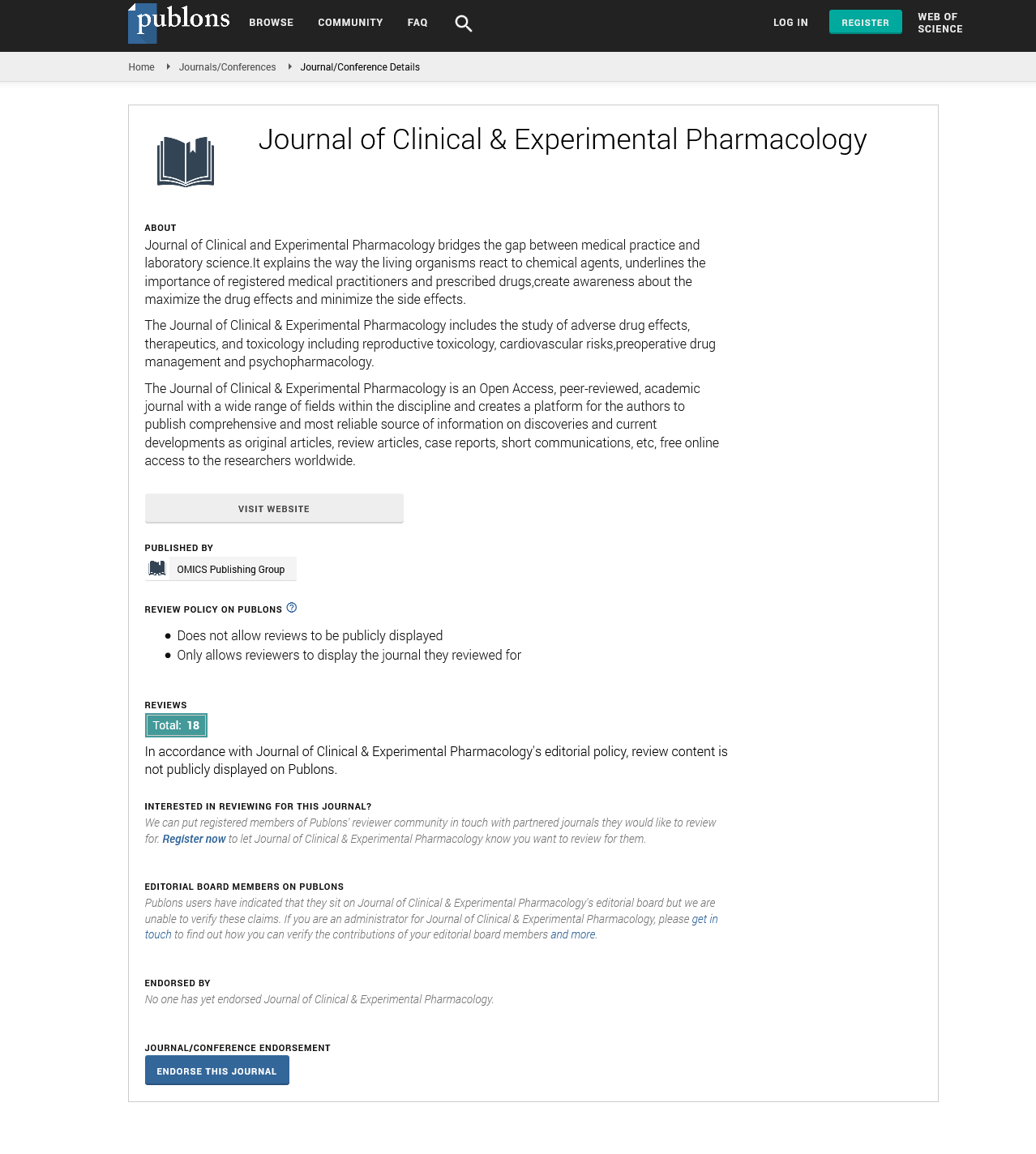Indexed In
- Open J Gate
- Genamics JournalSeek
- China National Knowledge Infrastructure (CNKI)
- Ulrich's Periodicals Directory
- RefSeek
- Hamdard University
- EBSCO A-Z
- OCLC- WorldCat
- Publons
- Google Scholar
Useful Links
Share This Page
Journal Flyer

Open Access Journals
- Agri and Aquaculture
- Biochemistry
- Bioinformatics & Systems Biology
- Business & Management
- Chemistry
- Clinical Sciences
- Engineering
- Food & Nutrition
- General Science
- Genetics & Molecular Biology
- Immunology & Microbiology
- Medical Sciences
- Neuroscience & Psychology
- Nursing & Health Care
- Pharmaceutical Sciences
Perspective - (2024) Volume 14, Issue 6
Describing the Potential of CRISPR-Cas9 for Targeted Drug Delivery
Tomasz Grodzicki*Received: 23-Nov-2024, Manuscript No. CPECR-24-28070; Editor assigned: 25-Nov-2024, Pre QC No. CPECR-24-28070 (PQ); Reviewed: 09-Dec-2024, QC No. CPECR-24-28070; Revised: 16-Dec-2024, Manuscript No. CPECR-24-28070 (R); Published: 23-Dec-2024, DOI: 10.35248/2161-1459.24.14.452
Description
The CRISPR-Cas9 system has emerged as an innovative tool in the domain of molecular biology, suggesting unparalleled precision for editing genetic material. Initially celebrated for its capacity to correct genetic disorders, researchers are now searching deeper into its potential applications, one of the most potential being its role in targeted drug delivery. By utilizing CRISPR-Cas9’s ability to modify specific genetic sequences, scientists aim to revolutionize how therapies are administered, making treatments more efficient, effective and customized to individual patient needs.
Targeted drug delivery has long been a focus of pharmaceutical innovation, with the goal of minimizing side effects while maximizing therapeutic benefits. Conventional methods often lack the specificity required to address this balance, leading to systemic side effects and reduced efficacy. The advent of CRISPR-Cas9 suggests a novel approach to overcoming these limitations. Its precision allows researchers to target genes and regulatory sequences associated with disease pathology, creating the possibility of delivering therapeutic agents directly to affected cells or tissues.
One of the primary mechanisms by which CRISPR-Cas9 facilitates targeted drug delivery is through the regulation of gene expression. By selectively activating or silencing specific genes, CRISPR-based systems can enhance the body’s natural ability to produce therapeutic molecules. For instance, in cancer treatment, CRISPR-Cas9 can be programmed to target genes involved in tumor growth, thereby suppressing their activity and reducing the progression of the disease. Moreover, it can be used to engineer immune cells to better recognize and attack cancerous tissues, enhancing the efficacy of immunotherapies.
Beyond gene regulation, CRISPR-Cas9 can also be used to engineer delivery vehicles, such as nanoparticles or viral vectors, with improved targeting capabilities. By modifying the genetic material of these carriers, scientists can design systems that home in on specific cell types or tissues. This ensures that the therapeutic agents they transport are released precisely where they are needed, minimizing collateral damage to healthy cells. Such innovations hold potential for treating conditions like neurodegenerative diseases, where crossing the blood-brain barrier has traditionally posed a major challenge.
The adaptability of CRISPR-Cas9 further extends to the development of next-generation drug delivery systems. Researchers are describing the integration of CRISPR components with other molecular tools to create hybrid platforms. For example, combining CRISPR-Cas9 with RNA-based technologies can enable the simultaneous editing of genes and delivery of RNA-based drugs. This dual-action approach not only enhances therapeutic outcomes but also reduces the complexity of treatment regimens, suggesting a more streamlined and patient-friendly solution.
Despite its transformative potential, the application of CRISPR-Cas9 in targeted drug delivery is not without challenges. Offtarget effects, where unintended genetic modifications occur, remain a significant concern. Such errors can lead to unintended consequences, including the activation of harmful pathways or the development of secondary complications. To address this, ongoing research focuses on improving the specificity and efficiency of CRISPR systems through advancements in guide RNA design and the development of high-fidelity Cas9 variants.
Another hurdle lies in the safe and effective delivery of CRISPR components to target cells. While viral vectors are widely used for this purpose, they come with risks such as immune responses and insertional mutagenesis. Non-viral delivery systems, including lipid nanoparticles and electroporation techniques, are being actively described as safer alternatives. These systems suggest greater control over the delivery process and reduce the likelihood of adverse reactions, preparing for more reliable therapeutic applications.
Ethical considerations also play a pivotal role in shaping the future of CRISPR-Cas9 technologies. As the potential for targeted drug delivery becomes increasingly apparent, it is essential to address concerns related to accessibility, affordability and equitable distribution. Ensuring that these innovations benefit a broad spectrum of patients, rather than being limited to those in resource-rich settings, is a critical aspect of their development and implementation.
In conclusion, the integration of CRISPR-Cas9 into targeted drug delivery represents a change of opinion in precision medicine. By controlling its ability to edit genetic material with remarkable accuracy, researchers are preparing for therapies that are not only more effective but also more personalized. While challenges remain, the ongoing advancements in CRISPR technology and delivery systems inspire optimism for a future where treatments are customized to the unique genetic makeup of each patient. This convergence of gene editing and drug delivery has the potential to transform the region of modern medicine, suggesting for more precise and less invasive therapeutic options.
Citation: Grodzicki T (2024). Describing the Potential of CRISPR-Cas9 for Targeted Drug Delivery. J Clin Exp Pharmacol. 14:452.
Copyright: © 2024 Grodzicki T. This is an open-access article distributed under the terms of the Creative Commons Attribution License, which permits unrestricted use, distribution, and reproduction in any medium, provided the original author and source are credited.

